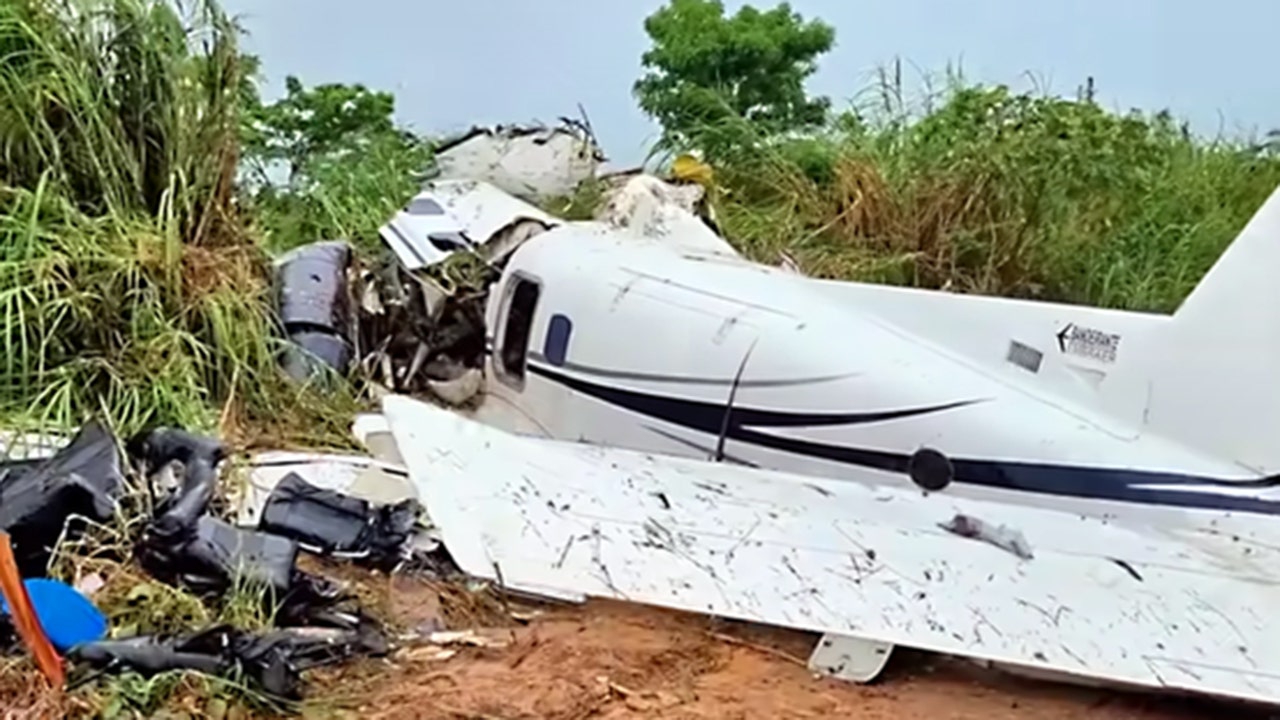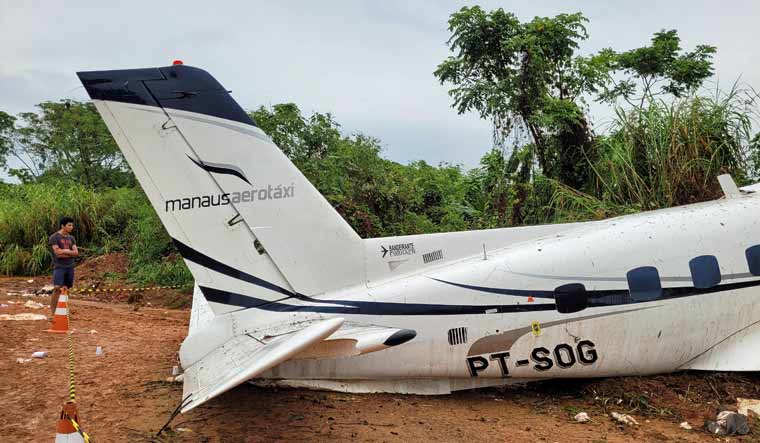Investigation and Response

The crash of the Brazilian aircraft in 2024 has triggered a comprehensive investigation to determine the cause of the accident and prevent future tragedies. Multiple agencies are involved, each with a specific area of expertise, to ensure a thorough and impartial examination.
Agencies Involved and Scope of Inquiry, Brazil plane crash 2024
The investigation is being led by the Brazilian National Civil Aviation Agency (ANAC), the primary regulatory body for aviation safety in Brazil. Other agencies participating in the investigation include the Brazilian Air Force, the National Institute of Forensic Science (IC) for examining the remains and the wreckage, and the National Transportation Safety Board (NTSB) if the aircraft was manufactured in the United States.
The scope of the investigation encompasses a wide range of factors, including:
- Aircraft Maintenance: Examination of the aircraft’s maintenance records, inspections, and any potential mechanical failures.
- Pilot Training and Experience: Assessment of the pilots’ qualifications, flight hours, training records, and any factors that might have influenced their actions.
- Weather Conditions: Analysis of weather data at the time of the crash, including visibility, wind conditions, and any potential atmospheric hazards.
- Air Traffic Control: Review of air traffic control communications, radar data, and any potential communication issues.
- Aircraft Design and Systems: Examination of the aircraft’s design, systems, and any potential design flaws or system malfunctions.
Preliminary Findings and Potential Causes
The initial investigation focuses on gathering evidence and conducting interviews with witnesses, survivors, and air traffic controllers. The preliminary findings may reveal potential causes, such as:
- Mechanical Failure: A malfunction in the aircraft’s engine, hydraulic systems, or other critical components.
- Pilot Error: Misjudgment, improper procedures, or a lapse in concentration by the pilots.
- Weather Conditions: Severe turbulence, heavy rain, or other weather events that could have affected the aircraft’s stability or visibility.
- Air Traffic Control Issues: Miscommunication, delays, or other factors related to air traffic control that might have contributed to the crash.
Immediate Response to the Crash
The immediate response to the crash involved a coordinated effort by multiple agencies, including:
- Rescue Efforts: Emergency responders, including firefighters, paramedics, and search and rescue teams, were dispatched to the crash site to assist survivors and recover victims.
- Medical Assistance: Injured survivors were transported to local hospitals for medical treatment.
- Support for Victims’ Families: The authorities provided support and counseling to the families of the victims, including grief counseling, information about the investigation, and assistance with funeral arrangements.
Impact and Aftermath: Brazil Plane Crash 2024

The crash of the Brazilian aircraft in 2024 sent shockwaves through the aviation industry, leaving an indelible mark on the lives of those affected and prompting a thorough examination of safety protocols and procedures. This tragic event served as a stark reminder of the inherent risks associated with air travel and highlighted the need for constant vigilance in ensuring passenger safety.
Impact on the Aviation Industry
The crash had a profound impact on the aviation industry in Brazil and globally. It prompted a wave of scrutiny and analysis of safety protocols and procedures, leading to a reassessment of existing regulations and the implementation of new safety measures. The incident also raised concerns about the reliability of aircraft maintenance and the adequacy of training for pilots and air traffic controllers.
- Increased Safety Scrutiny: The crash triggered a heightened level of scrutiny within the aviation industry, leading to comprehensive reviews of safety protocols, maintenance practices, and training programs. This included a thorough investigation of the aircraft’s maintenance history, the pilot’s training and experience, and the air traffic control procedures in place at the time of the accident.
- Enhanced Safety Regulations: The investigation’s findings are expected to lead to the implementation of new safety regulations and procedures aimed at preventing similar accidents in the future. These regulations could involve stricter maintenance requirements, enhanced pilot training programs, and improved air traffic control systems.
- Global Impact: The crash also had a significant impact on the global aviation industry, prompting international aviation authorities to review their own safety standards and protocols. This event served as a reminder of the interconnectedness of the global aviation network and the importance of maintaining consistent safety standards across all jurisdictions.
Impact on Individuals and Communities
The crash had a devastating impact on the families of the victims, the survivors, and the communities where the accident occurred. The loss of life and the trauma experienced by survivors left a deep emotional scar on those directly affected.
- Families of Victims: The families of the victims faced unimaginable grief and loss. They had to cope with the sudden and unexpected death of loved ones, navigate the complex legal and bureaucratic processes associated with such tragedies, and find ways to move forward with their lives.
- Survivors: Survivors of the crash endured physical and emotional trauma. They faced the challenge of recovering from their injuries, dealing with the psychological effects of the accident, and finding ways to rebuild their lives.
- Community Impact: The crash also had a profound impact on the communities where the accident occurred. Local residents were shaken by the tragedy and many felt a sense of loss and grief. The crash also disrupted daily life in the area, with emergency services and transportation systems being heavily impacted.
Stories and Perspectives
The crash prompted a wave of stories and perspectives from individuals affected by the tragedy. These narratives provided a human face to the disaster, offering insights into the lives lost, the struggles of survivors, and the resilience of the human spirit.
- Family Members’ Accounts: Family members of the victims shared their stories of loss, love, and remembrance. They spoke of the unique qualities of their loved ones, the impact their absence had on their lives, and their hopes for justice and accountability.
- Survivors’ Testimonies: Survivors of the crash shared their harrowing experiences, providing firsthand accounts of the moments leading up to the accident, the chaos and confusion during the crash, and the challenges they faced in the aftermath.
- Community Voices: Members of the community where the accident occurred shared their perspectives on the tragedy, the impact it had on their lives, and the ways in which they came together to support one another during a difficult time.
Brazil plane crash 2024 – The Brazil plane crash of 2024 is a tragic reminder of the dangers of air travel. While the investigation into this specific incident continues, it’s important to stay informed about plane crash today and the ongoing efforts to improve aviation safety.
Understanding the causes and consequences of these events can help prevent similar tragedies in the future, ensuring the safety of passengers and crew alike.
The recent Brazil plane crash in 2024 serves as a stark reminder of the ever-present dangers of air travel. Tragically, accidents like this highlight the importance of safety measures and thorough investigations. While we hope for a future with fewer such events, the reality is that accidents can happen, as evidenced by news reports on plane crash today.
The Brazil plane crash serves as a painful reminder of the fragility of life and the need for continued vigilance in the aviation industry.
